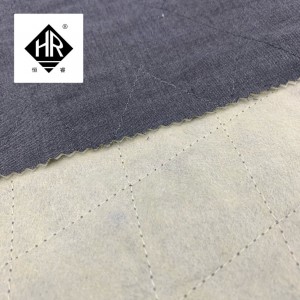When people wear flame-retardant clothing, flame retardant fabric and flame retardant lining will produce friction; Friction also occurs in the various spliced parts;High-temperature-resistant-fabric Friction will also occur when leaning on or leaning on objects; These frictions are likely to cause color transfer due to the poor color fastness of the fabric, thereby affecting the appearance of flame-retardant clothing. Therefore, the color fastness to friction test is a basic technical requirement. The color fastness to rubbing is so important, what are the factors that affect the color fastness to rubbing?High-temperature-resistant-fabric
Factors affecting color fastness to rubbing:
A. dry friction fastness with poor fabric varieties: rough surface or sanded, pile fabric, solid fabrics such as linen, denim fabric flame retardant, pigment printing fabric, accumulation of dry friction surface dye or other non-ferrous material grinding down, or part of colored fiber breakage form coloured particles, lowered the dry friction fastness series; In addition, there is a certain Angle between the lint on the surface and the contact surface of the ground cloth, which is not parallel, so that the friction resistance of the ground cloth increases, and the color fastness to dry rubbing decreases.High-temperature-resistant-fabric
B. Cellulose fabrics are generally dyed with reactive dyes, which can migrate the dyes on the test fabric to the ground cloth for two reasons:
Bring water soluble dyes in wet friction when moved to grind it, between reactive dye and cellulose fiber is through the combination of covalent bond, the type of this key is very strong, not because the friction caused by the rupture, mainly those by van der Waals force with the dye combination of cellulose fibre (that is, common says floating color), under the wet friction will shift to the polishing cloth, Resulting in poor color fastness to wet rubbing.
▲ The stained fibers are broken in the process of friction, forming tiny colored fiber particles and transferred to the ground cloth, resulting in poor color fastness to wet friction.
C. The color fastness to wet rubbing of fabrics dyed with reactive dyes is closely related to the depth of dyeing. When dyed with dark color, the dye concentration is higher, because the excessive dye cannot be combined with the fiber, and can only accumulate on the surface of the fiber to form floating color, which seriously affects the color fastness to wet rubbing of the fabric. The DEGREE OF PRETREATMENT OF CELLULOSE FIBER FABRICS directly AFFECTS THE COLOR FASTNESS TO WET RUBBING, MERCERIZING, FIRING, cooking, bleaching and other pretreatment, which can make the fabric surface smooth, reduce friction resistance, and improve the color FASTness to wet rubbing.
D. For light and thin polyester fabric, when dry friction is carried out, the fabric is relatively loose, and under the action of friction, the fabric will slip locally, which increases the friction resistance; However, in the wet rub color fastness test of this kind of fabric, because of the low water absorption of polyester, water plays the role of lubrication during wet grinding, so the color fastness of the fabric to wet is better than that to dry. Some dark colors like black, red or navy blue are more effective. However, for corduroy fabrics, under wet condition, due to the dye and dyeing process used, the color fastness to wet rubbing is usually only about 2 levels, which is not better than dry rubbing color fastness.
E. The softener added in the post-finishing process plays a lubricating role, which can reduce the coefficient of friction and reduce the shedding of dye. Cationic softener and anionic reactive dye will react to form a lake, which will reduce the solubility of dye and improve the color fastness to wet rubbing of fabric. The softener of hydrophilic group is not conducive to the improvement of color fastness to wet rubbing.
Post time: Sep-27-2022

